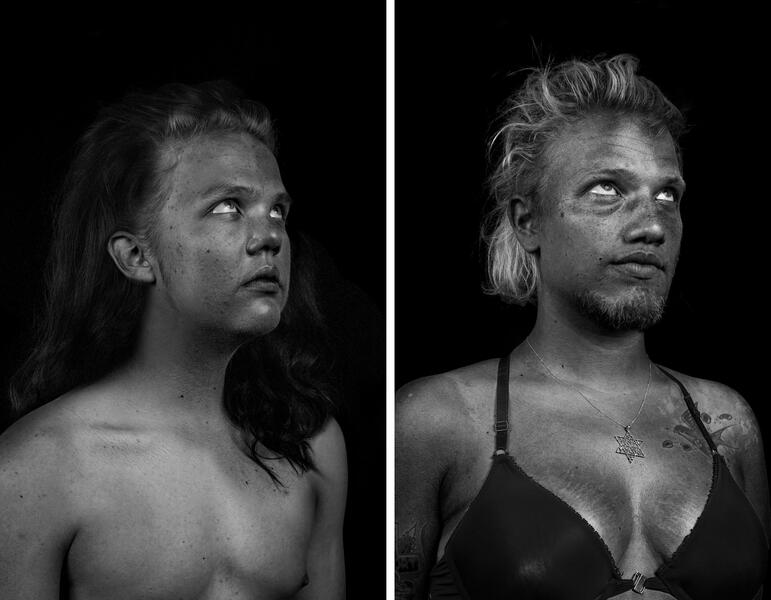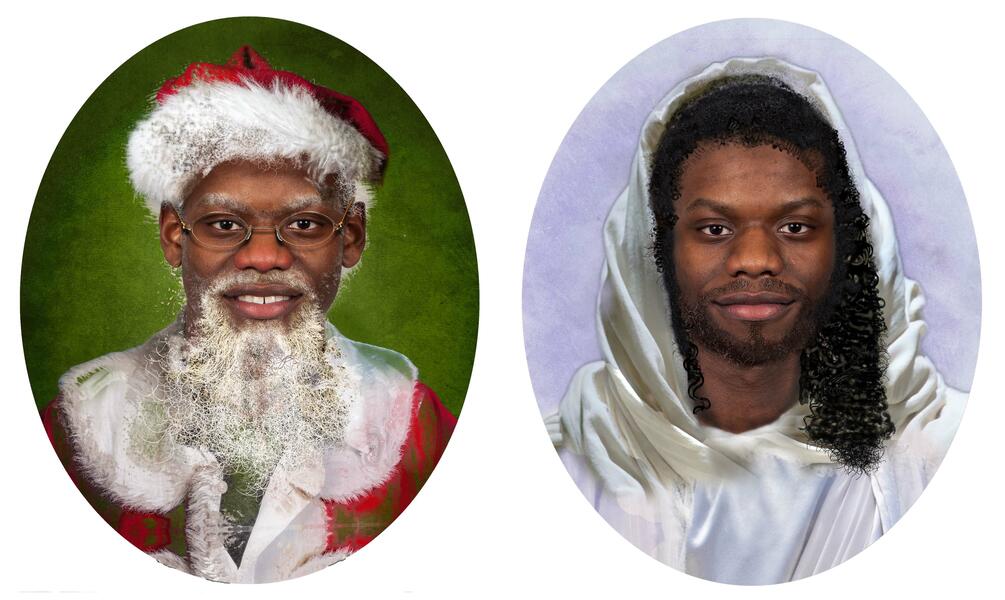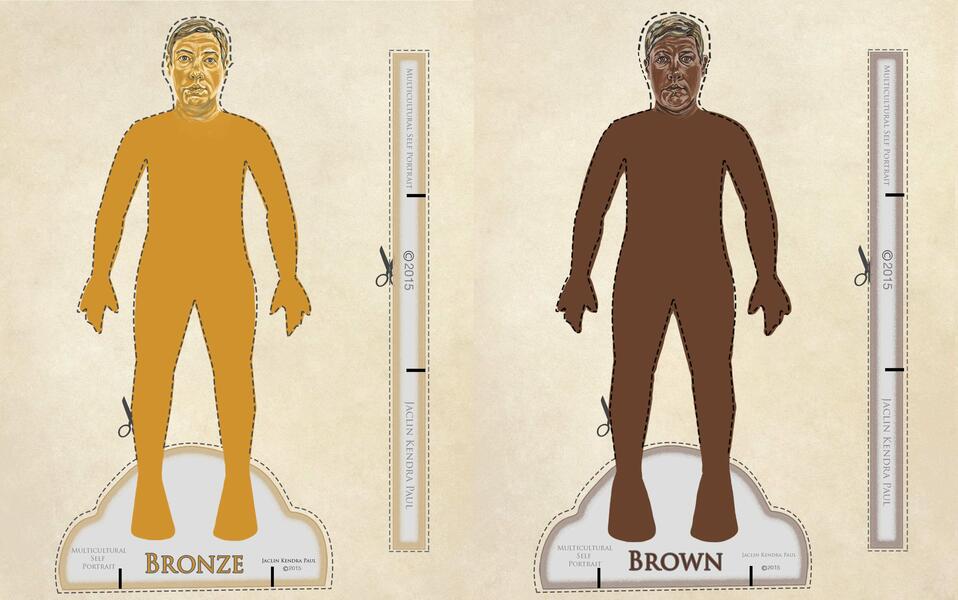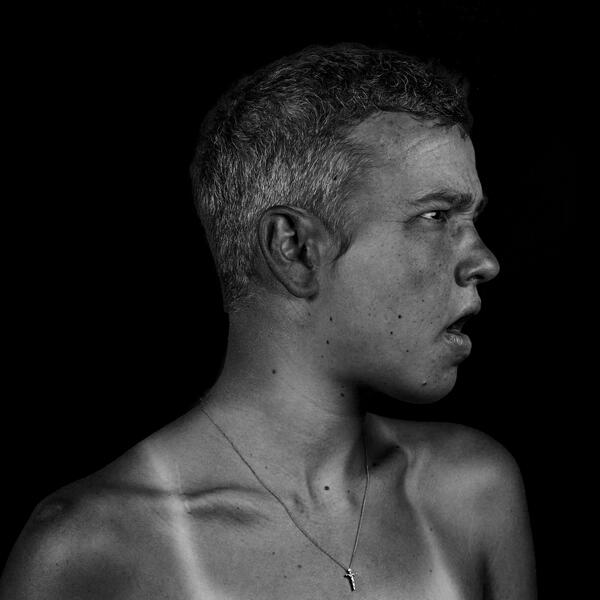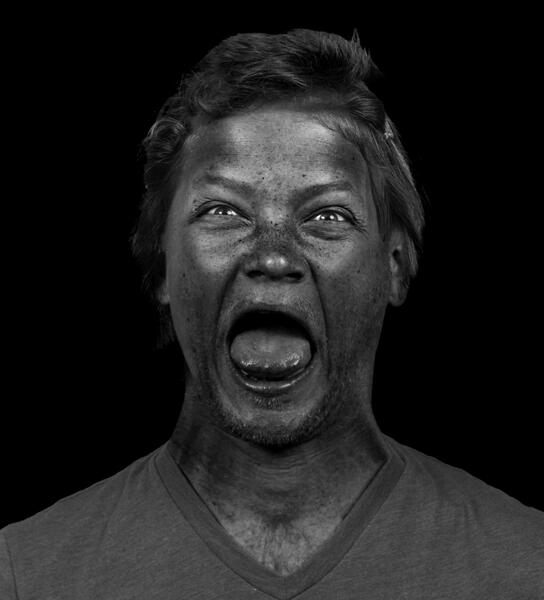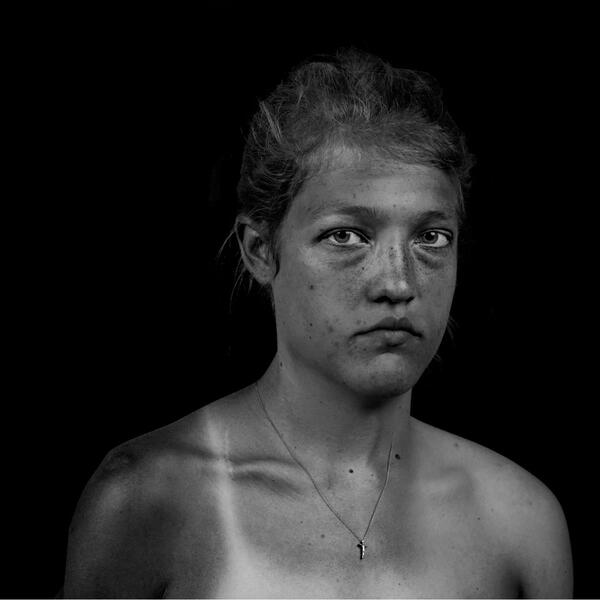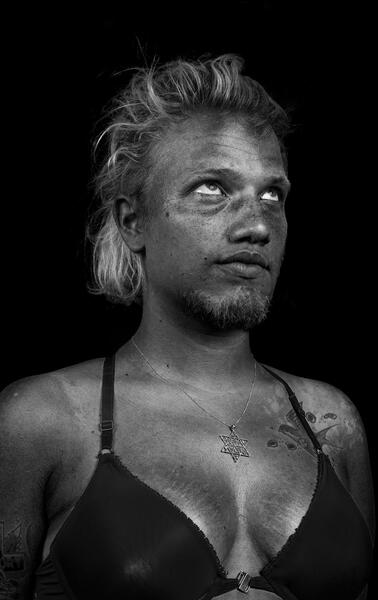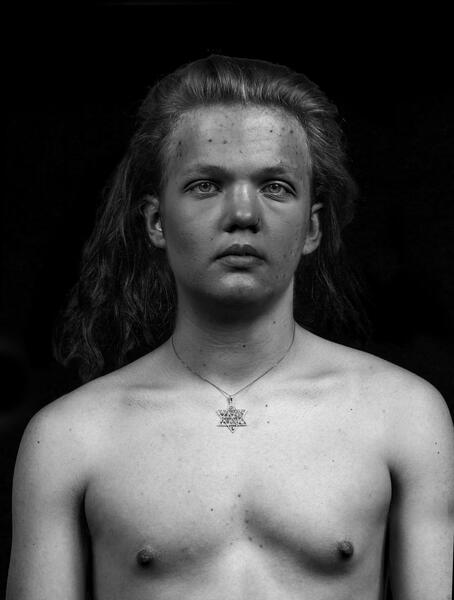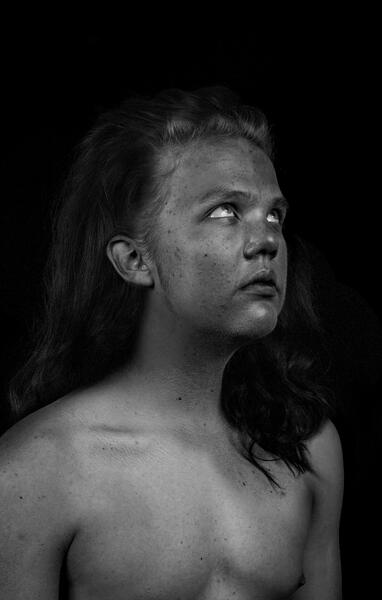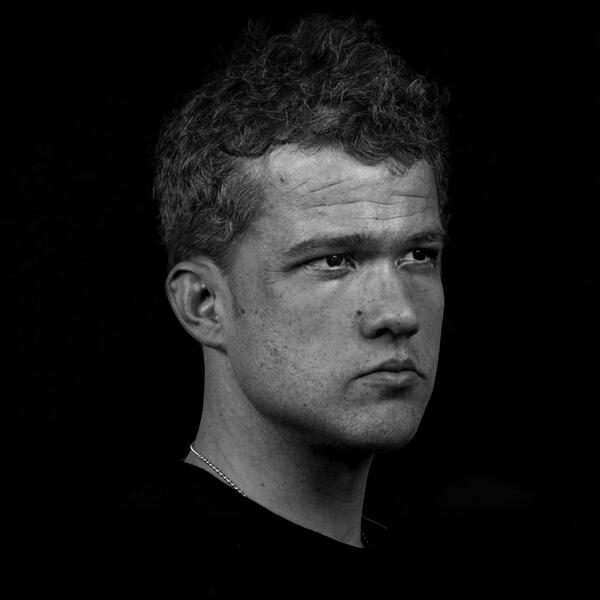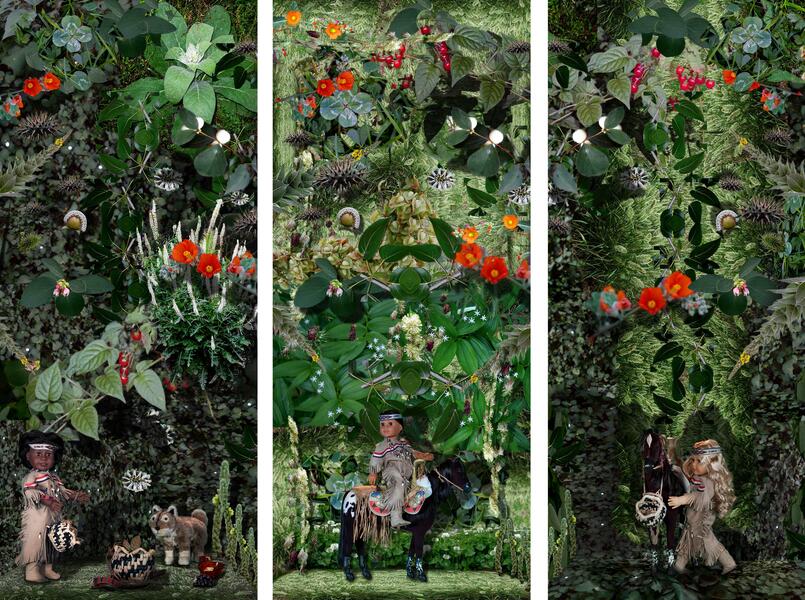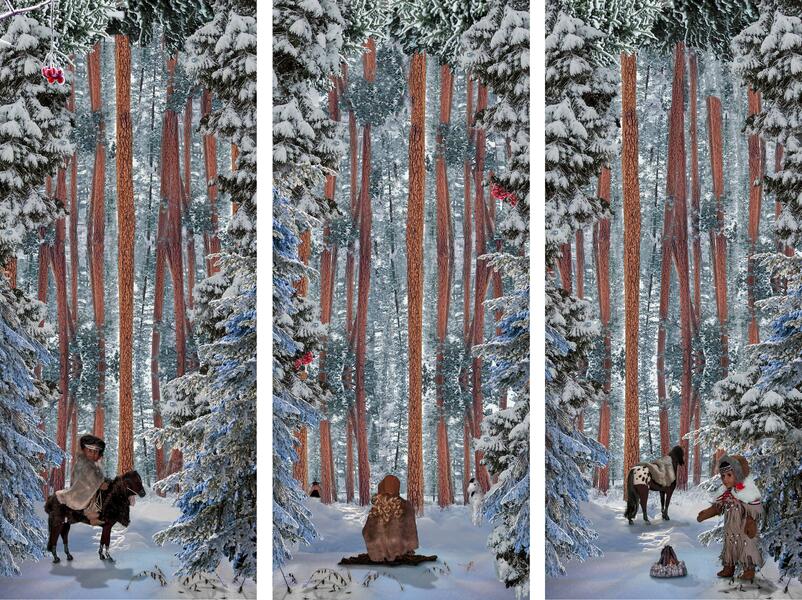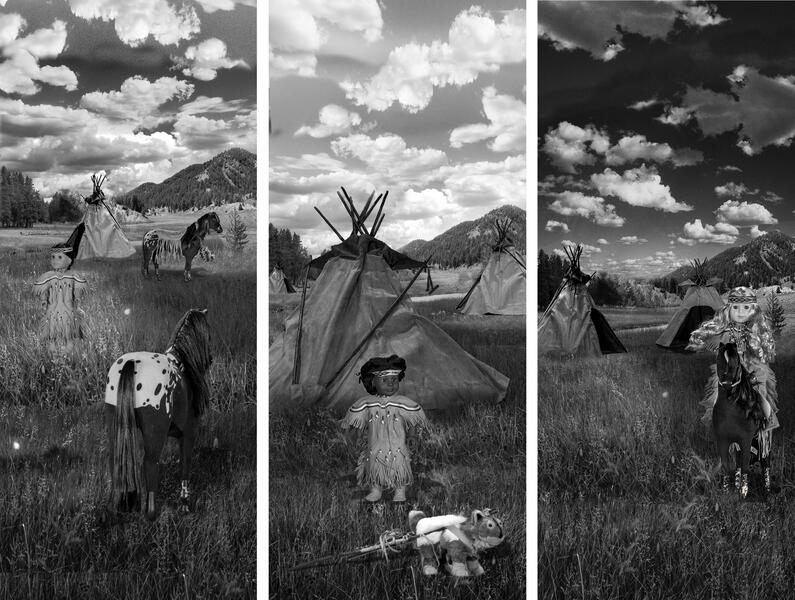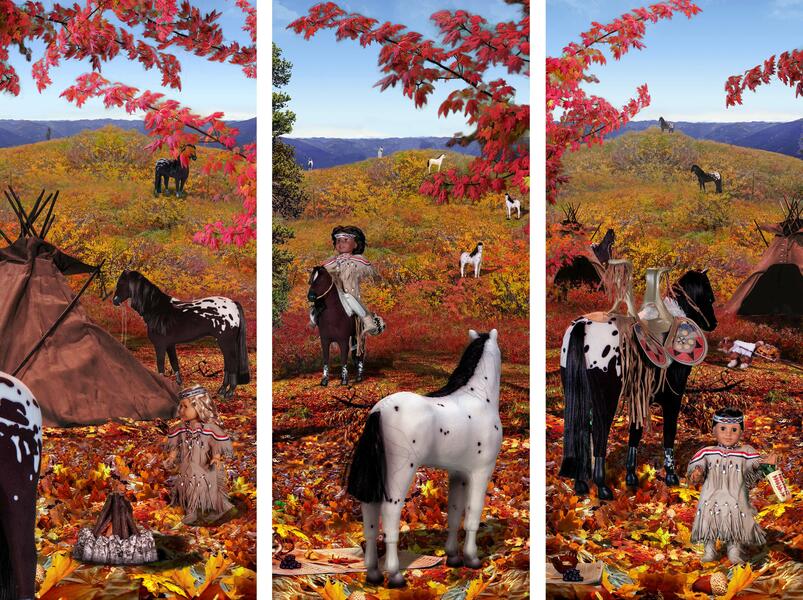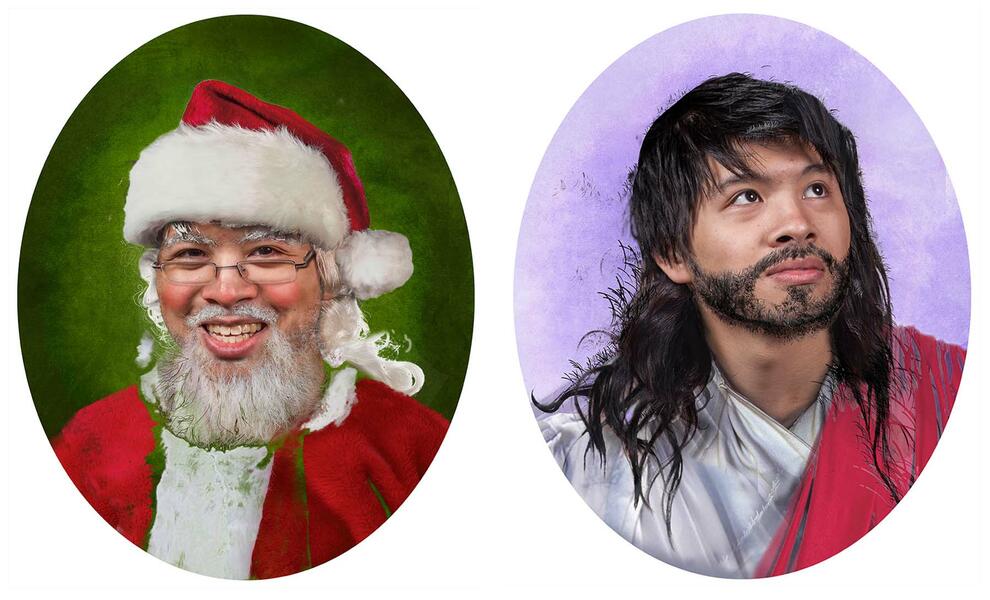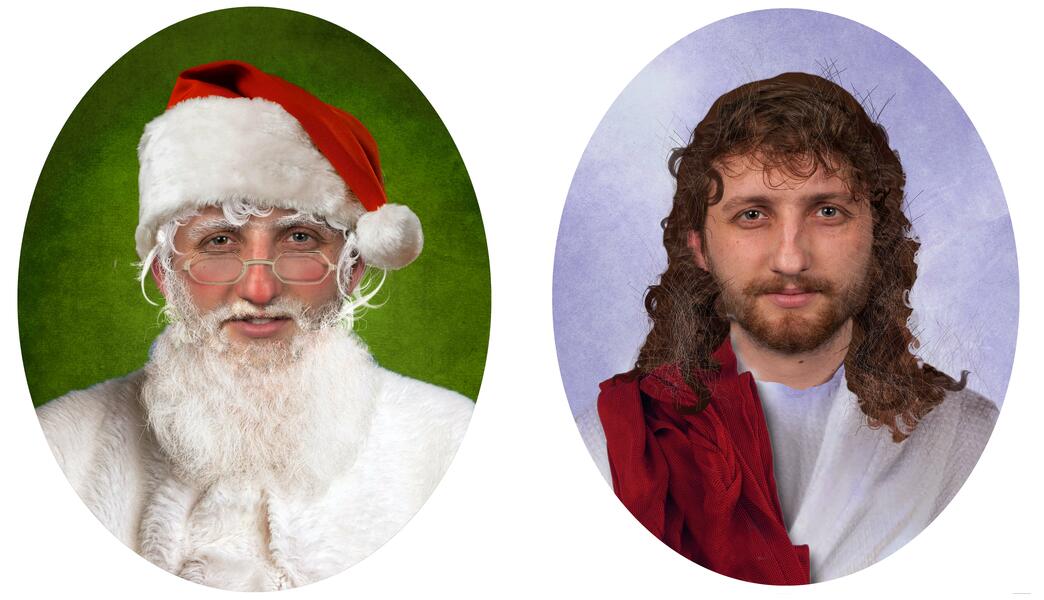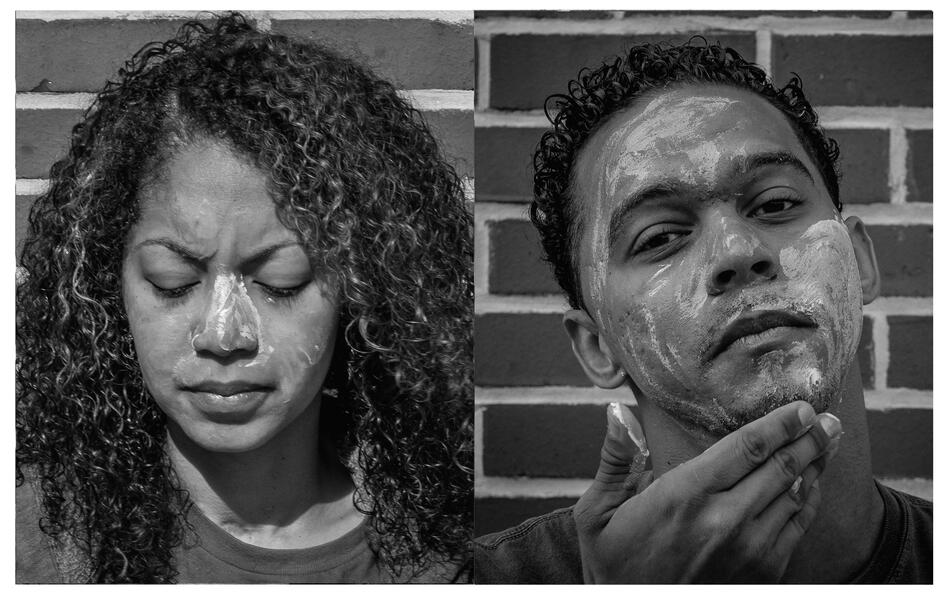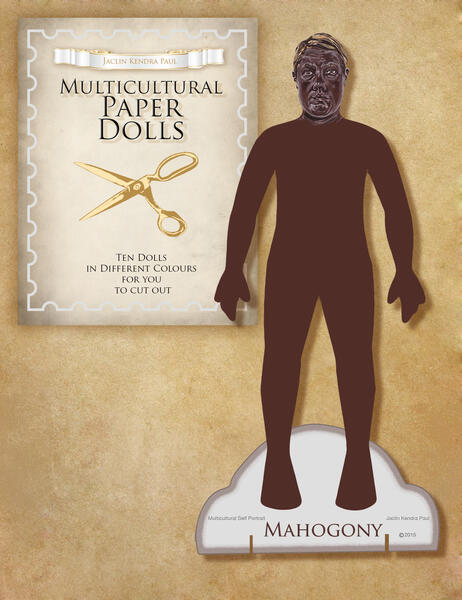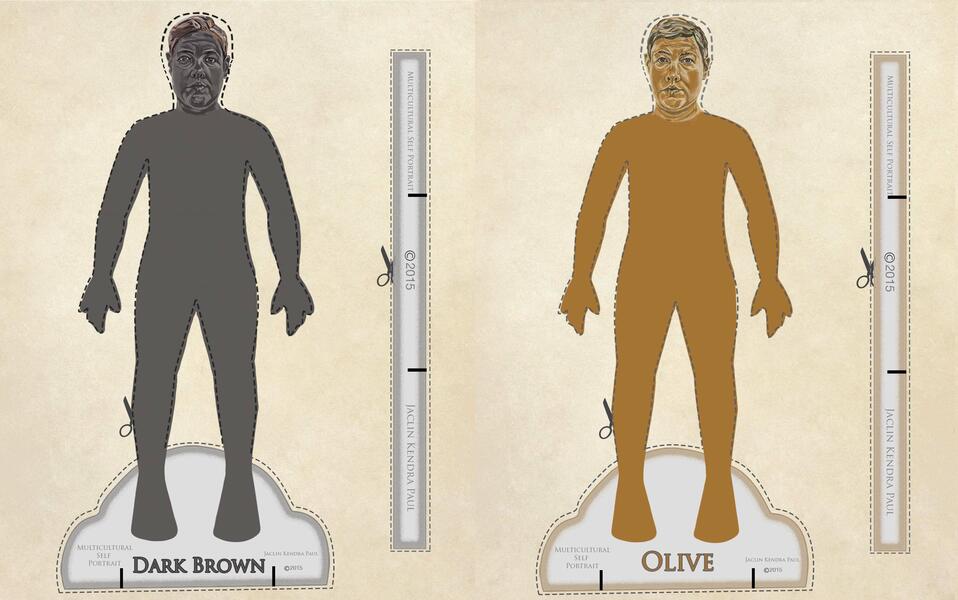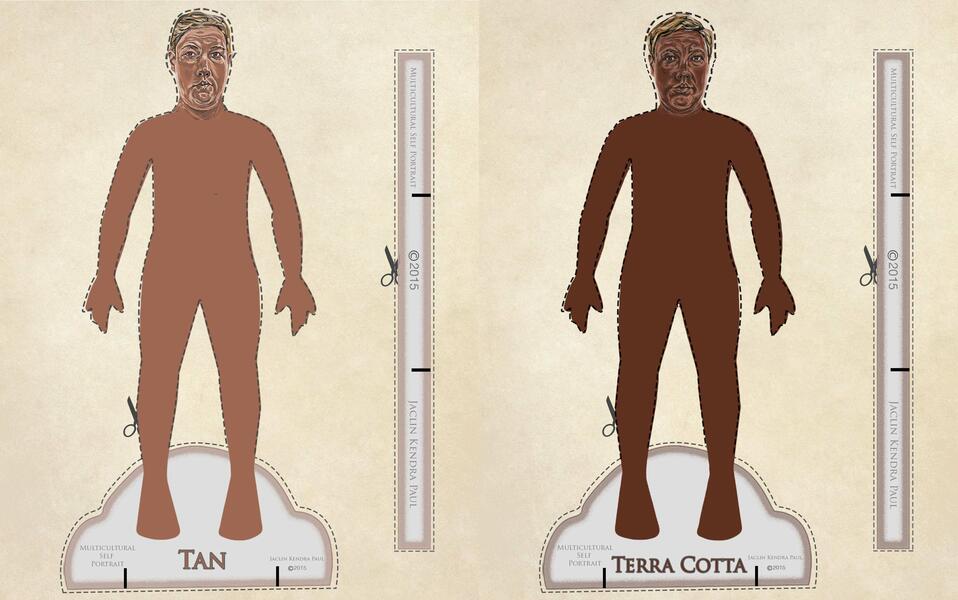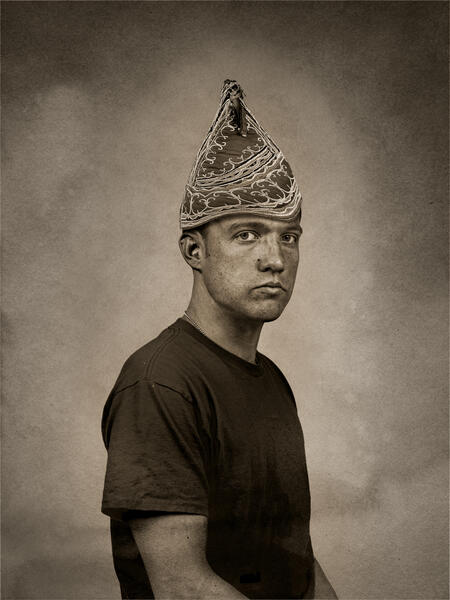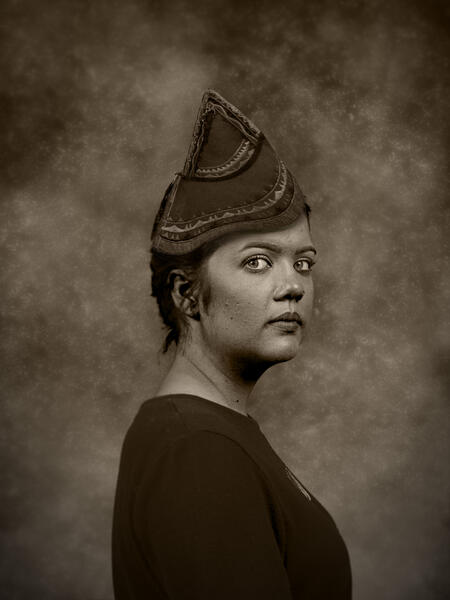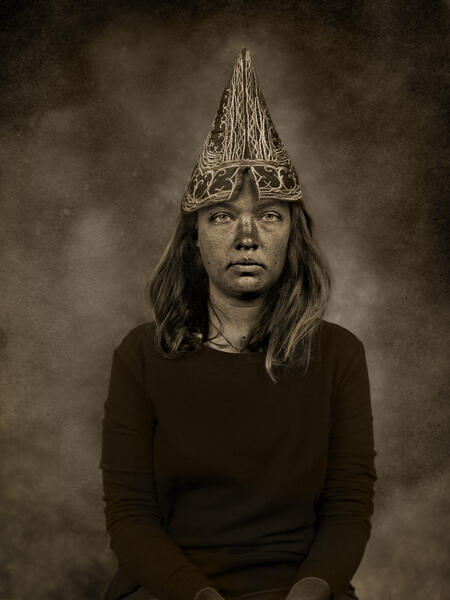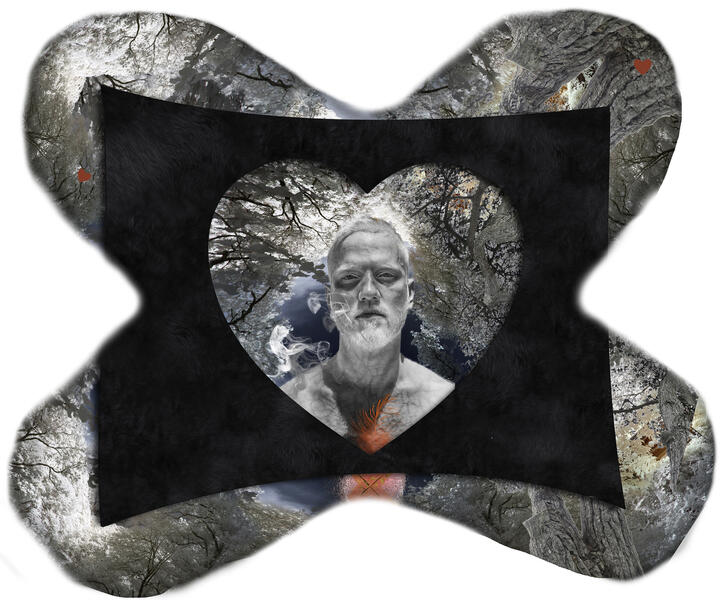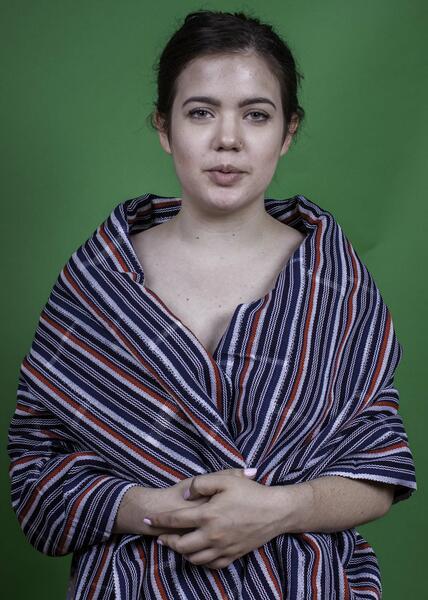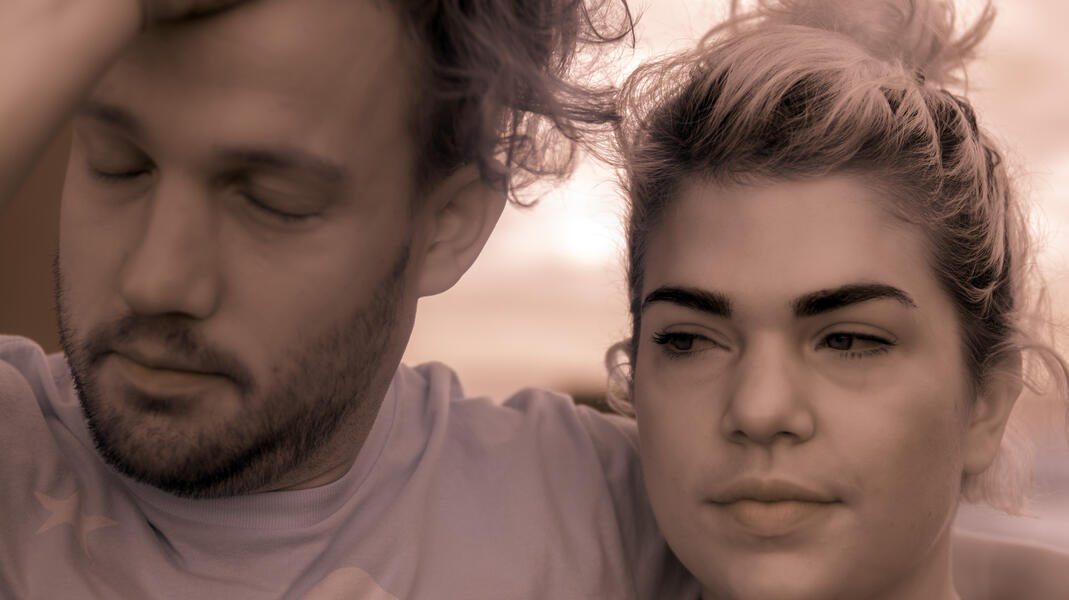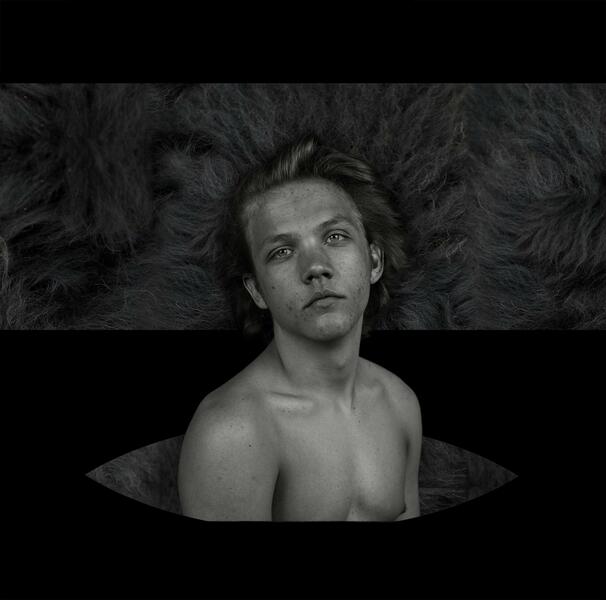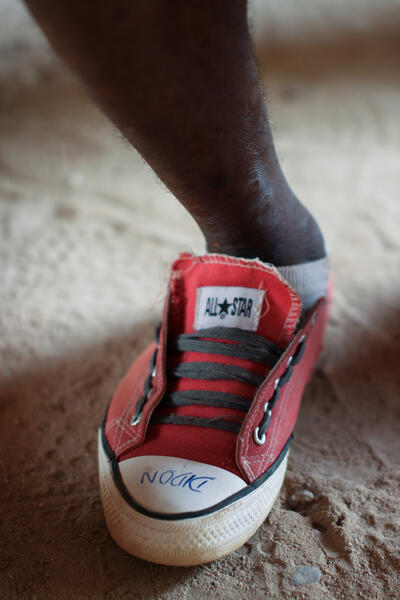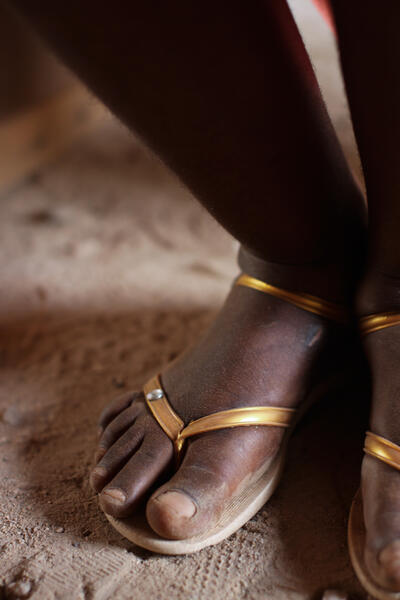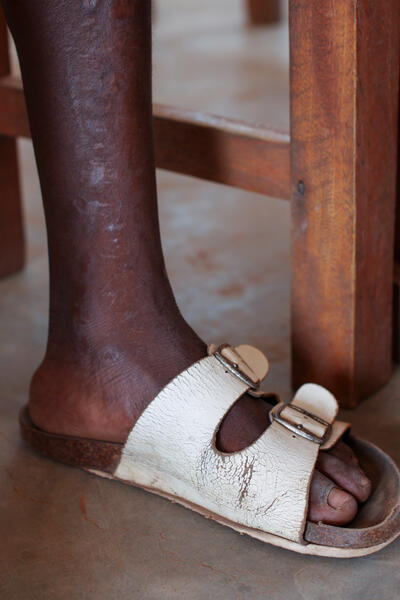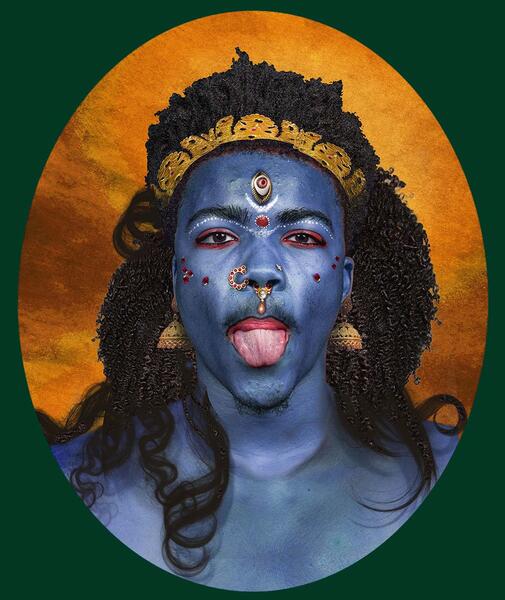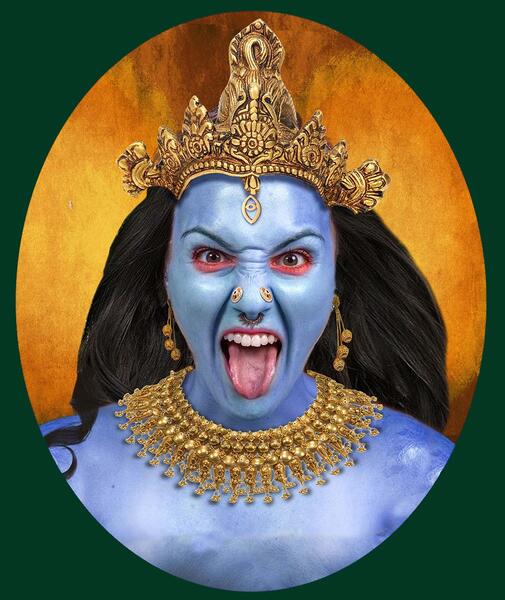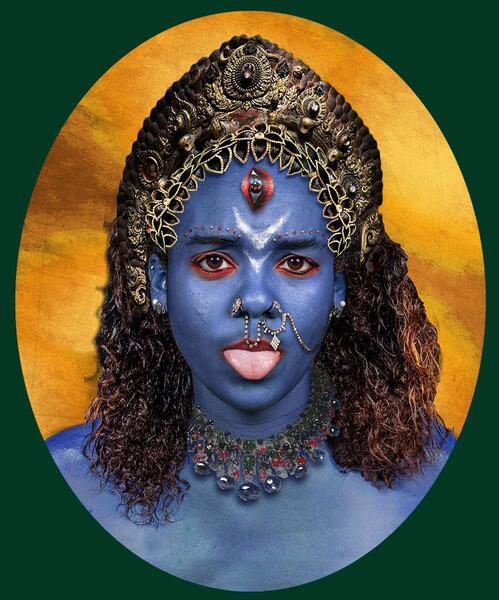About Jaclin
Baltimore City
Jaclin Paul lives in Baltimore, Maryland and makes images and animations about the semiotics and pragmatics of phenotypes. She received a BFA from The School of the Art Institute of Chicago and is currently a Shriver Peaceworker Fellow and MFA Thesis Candidate in the Intermedia and Digital Arts Program at the University of Maryland, Baltimore County.
Jump to a project:
First Contact
First Contact addresses cultural appropriation using American Girl Dolls. American Girl Company manufactures a line of historic character dolls. Each of these fictional personalities inhabits a pivotal time and location in the US’s history. Four of the dolls, Kaya, Addy, Josefina and Caroline are relative contemporaries, all alive during the 19th century. Addy is an escaped slave, Josefina lives in New Mexico under Mexican rule in the 1820s, Caroline represents the War of 1812, and Kaya is a member of the Nimiipuu tribe right after Lewis and Clark infiltrate them.
I decided to create a narrative of historical fiction where the character dolls of the American Girl company who were alive at the time of Kaya, visibly assimilate to her culture by inhabiting her geographic location, wearing her clothes, maintaining her animals, preparing and eating her food and utilizing her dwellings. First Contact is a group of four triptychs, one for each of the four seasons in the Pacific Northwest, where the Nimiipuu tribe originate. The compositions are vertical, and mostly occupied by botanic and topographic features found in Oregon, Idaho and Washington. Within each composition is one of three American Girl dolls: Addy, Caroline and Josefina, inhabiting Kaya's native environment, wearing her clothing and posed with the accessories of her Nimiipuu culture.
I decided to create a narrative of historical fiction where the character dolls of the American Girl company who were alive at the time of Kaya, visibly assimilate to her culture by inhabiting her geographic location, wearing her clothes, maintaining her animals, preparing and eating her food and utilizing her dwellings. First Contact is a group of four triptychs, one for each of the four seasons in the Pacific Northwest, where the Nimiipuu tribe originate. The compositions are vertical, and mostly occupied by botanic and topographic features found in Oregon, Idaho and Washington. Within each composition is one of three American Girl dolls: Addy, Caroline and Josefina, inhabiting Kaya's native environment, wearing her clothing and posed with the accessories of her Nimiipuu culture.
Sansus
The US government uses naming and categorization to designate racial/ethnic categories on the US census. Sansus is a visual thought experiment that applies the U.S. census racial/ethnic categories as a framework for the democratization of two icons that are usually depicted as white men: Jesus and Santa.
In the 2010 census, the government categorized citizens in these 14 categories so I visualized the categories using composites that provide a Jesus and Santa for each. I generated 18”x24” portraits, two for each of the census categories.
One portrait for each category depicts a model as Santa, and one portrait for each category depicts the same model as Jesus.
In the 2010 census, the government categorized citizens in these 14 categories so I visualized the categories using composites that provide a Jesus and Santa for each. I generated 18”x24” portraits, two for each of the census categories.
One portrait for each category depicts a model as Santa, and one portrait for each category depicts the same model as Jesus.
Sunscreen Binary
In Sunscreen Binary I used ultraviolet light to make a series about how photography and light waves reveal and obscure aspects of black subjectivity. I shot with a lens filter that blocks all light waves except ultraviolet. As a result, any surface that repels ultraviolet wavelengths appears opaque black in the final image. I took photographs of two models who identify as black. Since only ultraviolet light passed through the filter the white sunscreen appears opaque so it looks like the subjects are using the sunscreen to make their skin black.
As a comparison, I also shot a group of portraits without the UV filter, using visible light. The compositional elements are identical and the models apply the same sunscreen but it appears white because it is captured in the visible light spectrum. In the images, as the models apply the sunscreen to their faces and their expressions are varied.
The images reference the history of minstrelsy in early to mid 19th century in the US where white entertainers used burnt cork and cocoa butter to make their faces black. The white entertainers performed as freed slaves in attempt to make black people appear subhuman. Sunscreen Binary also references contemporary uses of blackface in racist contexts by people who identify as white or for accurate biographical depiction in acted movies or TV roles by people who identify as black. The work departs from these historic and contemporary uses of skin darkening material because it illustrates an invisible incidental occurrence that takes place whenever someone puts on sunscreen. When I created Sunscreen Binary I wanted to see what the images would look like and find out if they had symbolic meaning. I also wanted to observe viewer response based on their understanding of blackface and their perceptions about the phenotypes of the models.
As a comparison, I also shot a group of portraits without the UV filter, using visible light. The compositional elements are identical and the models apply the same sunscreen but it appears white because it is captured in the visible light spectrum. In the images, as the models apply the sunscreen to their faces and their expressions are varied.
The images reference the history of minstrelsy in early to mid 19th century in the US where white entertainers used burnt cork and cocoa butter to make their faces black. The white entertainers performed as freed slaves in attempt to make black people appear subhuman. Sunscreen Binary also references contemporary uses of blackface in racist contexts by people who identify as white or for accurate biographical depiction in acted movies or TV roles by people who identify as black. The work departs from these historic and contemporary uses of skin darkening material because it illustrates an invisible incidental occurrence that takes place whenever someone puts on sunscreen. When I created Sunscreen Binary I wanted to see what the images would look like and find out if they had symbolic meaning. I also wanted to observe viewer response based on their understanding of blackface and their perceptions about the phenotypes of the models.
Multicultural Self Portraits
Multicultural Self Portraits are about producing and naming hues to represent the spectrum of skin complexion. They are about the psychology of representation when an individual chooses how to reproduce their skin complexion. The phenomenon of multicultural art supplies makes me question the power in naming and the significance of limiting options with which to represent an aspect of the self, in this case the color of one’s skin.
Whoever chose the colors and words to describe the colors is exerting power by limiting options and also defining the options through language and metaphor. The metaphors are names of wood like mahogany and names of metal like bronze and names of skin like “skin pink.” The power dynamics are in play when someone is given a small set of colors from which to choose to represent their skin. The fixed number of paint colors results in the lack of visual representation of some users.
The relationship between manufactured, color and the user is complicated when the manufacturer names the colors. In a class setting the name of the user’s skin color choice might have significance when compared to the skin color names of their peers.
Individual choice is also a part of the user’s relationship with multicultural colors. The user might choose a color that is not the same hue as their skin because of cultural influence on their psyche. I’m interested in the meaning of that choice and the impact of naming and limiting choices. The project touches the surface of these questions by using myself as a test case to see what meaning is produced by painting my portrait with ten different colors of skin and naming each of my portraits one of the ten different words for those colors.
Whoever chose the colors and words to describe the colors is exerting power by limiting options and also defining the options through language and metaphor. The metaphors are names of wood like mahogany and names of metal like bronze and names of skin like “skin pink.” The power dynamics are in play when someone is given a small set of colors from which to choose to represent their skin. The fixed number of paint colors results in the lack of visual representation of some users.
The relationship between manufactured, color and the user is complicated when the manufacturer names the colors. In a class setting the name of the user’s skin color choice might have significance when compared to the skin color names of their peers.
Individual choice is also a part of the user’s relationship with multicultural colors. The user might choose a color that is not the same hue as their skin because of cultural influence on their psyche. I’m interested in the meaning of that choice and the impact of naming and limiting choices. The project touches the surface of these questions by using myself as a test case to see what meaning is produced by painting my portrait with ten different colors of skin and naming each of my portraits one of the ten different words for those colors.
Penobscot Siblings
I continued making work about cultural assimilation and appropriation when I produced Penobscot Siblings – a series about diluted ethnic heritages and that which is lost when passing as white. The seven portraits show seven siblings whom are supposedly Penobscot wearing a felt peaked cap, traditional wear from the Native American Penobscot tribe. Each sibling sits in front of a cloudy, mottled backdrop. The images are altered to appear weathered and sepia-toned, similar to 19th century photographs of Native Americans.
Sibling Portraits I
Sibling Portraits depicts eight biological siblings through photographs, animation and audio. The faces of the siblings are on display for comparison. Their gazes create a mediated relationship when returned by the viewer. The production of Sibling Portraits was an aesthetic exercise where I considered elements of design, facial metrics, and the exchange of looking.
